We were in San Francisco today, taking down the paintings from my show at Borderlands Café. They still have some high-quality signed prints of my paintings on sale at Borderlands Books next door. In the photo below, note “Turing and the Skugs” on the wall.

It was nice to be in the city for the day, on the loose. We went to see a great print show at the Legion of Honor Art Museum out on the cliffs near the Golden Gate Bridge. The show was called Japanesque—it’s about Japanese prints in the time of French Impressionism. (The French used the word “Japonisme.”)

The big show-stopper is a nearly complete set of Katsushika Hokusai’s series of woodcuts, each in about eight colors, 36 Views of Mount Fuji , completed in the 1830s. The most famous of these is The Great Wave, but I’ve posted a picture of Asakusa Temple in Edo. Actually you can see rather good images of all 36 prints on Wikipedia! The show also has an “answer” series by French artist Henri Riviere, 36 Views of the Eiffel Tower.

I wandered into the porcelain gallery and saw this plate with Adam and Eve. Eve looks like the Headless Horseman carrying her head. Porcelain galleries are kind of interesting, so brittle and polychrome, quite unlike painting galleries.
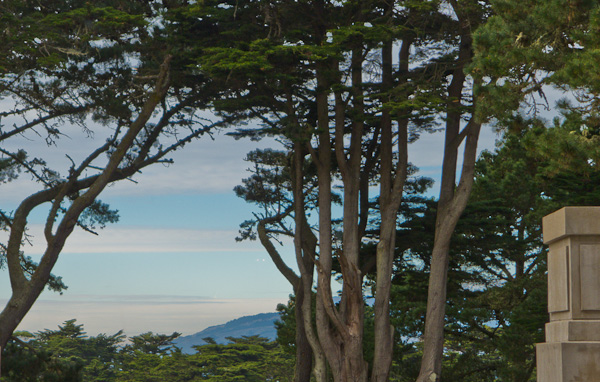
Outside the wintry sky looked like…a Japanese woodcut, with printed areas of pink among the blues, framed by the the Art Nouveau curves of the Monterey pines.
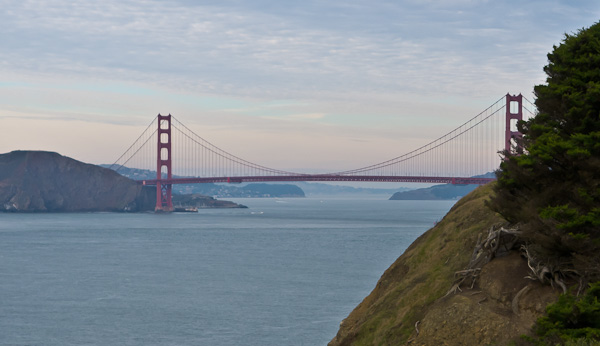
Naturally, Sylvia and I pondered creating a series, 36 Views of the Golden Gate Bridge. In this vein I should mention the wonderful California artist Tom Killion, and his series of prints, 28 Views of Mount Tamalpais, views of and on a mountain just across the Golden Gate Bridge from San Francisco. Killion’s also published a related book with the poet Gary Snyder.
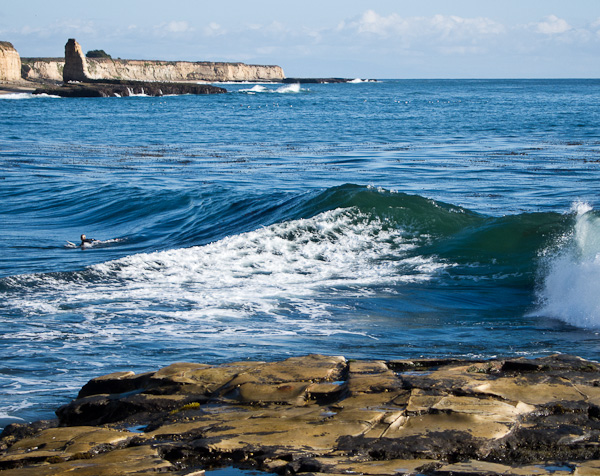
On the writing front, I keep rewriting a long journal note called, “What’s the Plot Again?” about my plans for Turing & Burroughs. This material is a little too detailed and preliminary to put up in a blog post—I’ll only quote the start:
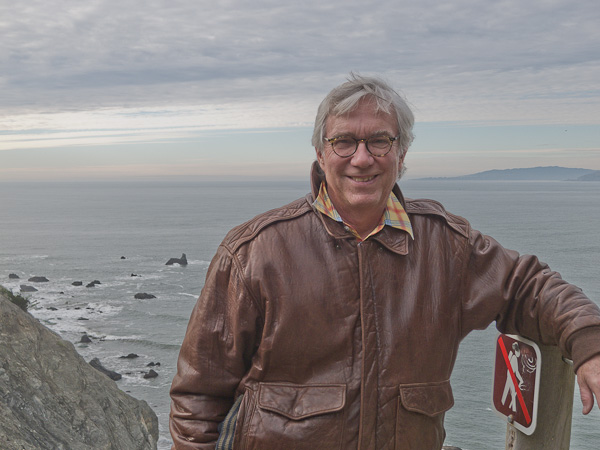
I’m getting close to being a third of the way through Turing & Burroughs, and I need to think about the plot some more. Once again I’ve reached what the writer Robert Sheckley used to call a “black point.” I’m not at all sure where to go.
So, okay, fall back on craft. Around the end of the first third, a book needs a conflict, a bump, an unforeseen development. So far it’s been pretty straight-ahead. Turing learns to tweak biocomputations, he creates a skug, the skug can convert humans into shapeshifting skuggers. Now the plot thickens. Somehow.
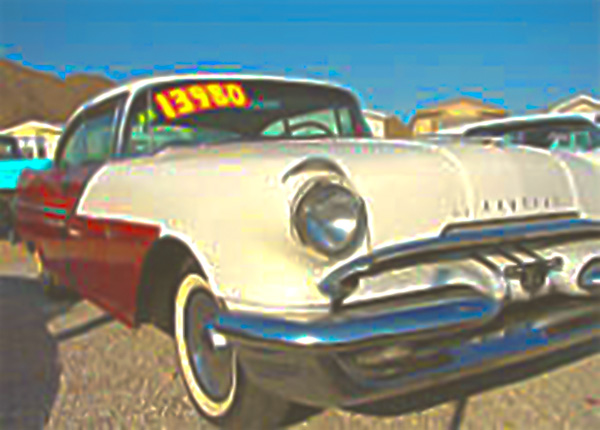
I have picked out a car for Alan and his companions to drive, heading from Palm Beach to Los Alamos, New Mexico. It’s a 1955 Pontiac Catalina that I found for sale online.
It goes almost without saying that the skugs are, being 1950s mutants, really into nukes, and therefore into visiting the Los Alamos National Laboratories. They plan to get some kind of boost from nuclear power or from a nuclear bomb. Alan takes advantage of his new friend Ned Strunk’s Los Alamos connections—Ned underwent training there to be a nuclear-reactor tech for the Nautilus submarine.

I think Alan, posing as a woman, gets hired to work at Los Alamos as, get this, a programmer. Stanislaw Ulam, mathematician and co-inventor of the hydrogen bomb, had a woman assistant who coded up his nonlinear wave equation simulation for him. “We wish to thank Miss Mary Tsingou for efficient coding of the problems and for running the computations on the Los Alamos MANIAC machine,” reads a footnote in E. Fermi, J. Pasta, and S. Ulam, “Studies of Nonlinear Problems”, published in 1955, and based on work done in 1952.
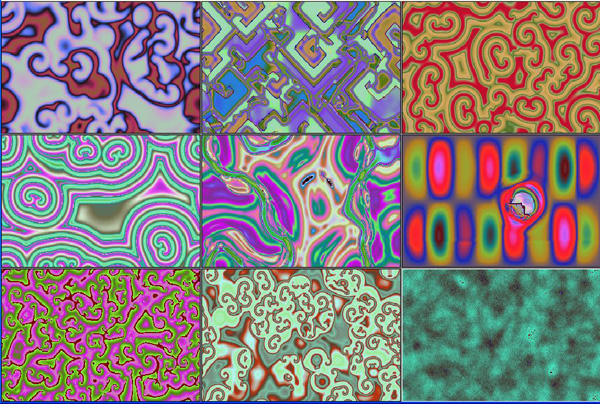
This paper is dear to my heart, I spent a number of years creating the cellular automata package Capow (still free online for Windows), for viewing Ulam’s creations. See also my own paper on this topic, “Continuous Valued Cellular Automata for Nonlinear Wave Equations,” co-authored with the mathematician Daniel N. Ostrov.

Alan becomes Ulam’s programmer, and works on nonlinear wave equations for use in creating, I dunno, small hydrogen bombs that fit inside lightbulbs for illuminating the home? Perhaps, along the way, Alan so improves his skug technology that skugs can be inhabited not only by human minds but by aethereal, invisible beings. And maybe in a Pied Piper ending, Alan creates some bomb-that’s-not-a-bomb that lures all the skugs to their demise like moths to aflame, like the children of Hameln into the cave beneath the mountain.
“Getting a little skuggy in here, isn’t it?”









December 2nd, 2010 at 11:11 am
This post reminds me of what might be the only non-solemn sentence ever written by Kurt Gödel. On June 25 1961 he wrote to his mother: “It would interest me very much to know what progress the toy industry has made in the last forty-five years. Are there not also already small atom bombs for children?”
December 2nd, 2010 at 2:27 pm
Roy, that quote is amazing!
December 2nd, 2010 at 7:37 pm
Dang, I could have used a small atom bomb for my birthday. As it happens my birthday was June 25 1961.
I found a source for this quote, “A logical journey: from Gödel to philosophy” by Hao Wang. It notes that this was in reply to his mother asking him what he wanted for a Christmas gift. He asks for a “…price-catalogue (or at least a prospectus) of Muhlhauser or Niennes or their successors.”
December 3rd, 2010 at 2:40 pm
You guys are RAD!
December 7th, 2010 at 6:43 am
Would it be skuggy or skugly?
December 7th, 2010 at 10:30 am
I like skuggy, as it sounds nastier, a little like grubby. Skugly is akin to studly, and could be used as a positive self-descriptor—by a skugger. A somewhat dismissive word would be skuggish, akin to thuggish. And in German it might be skugbar, which is funny to me, but fairly irrelevant. A Californian might say, “The scene was totally skuggin,” but they didn’t talk that way in 1955, which is another constraint here.
When I make up my SFictional words, I think quite a bit about the associations, sound, and possible homonyms of a word. They have to be short and punchy, to be things people might say. And if you can layer in some good overtones, it’s great. Language is such a web. I love it.